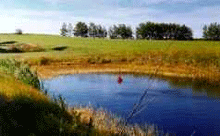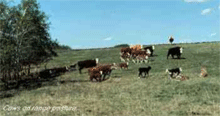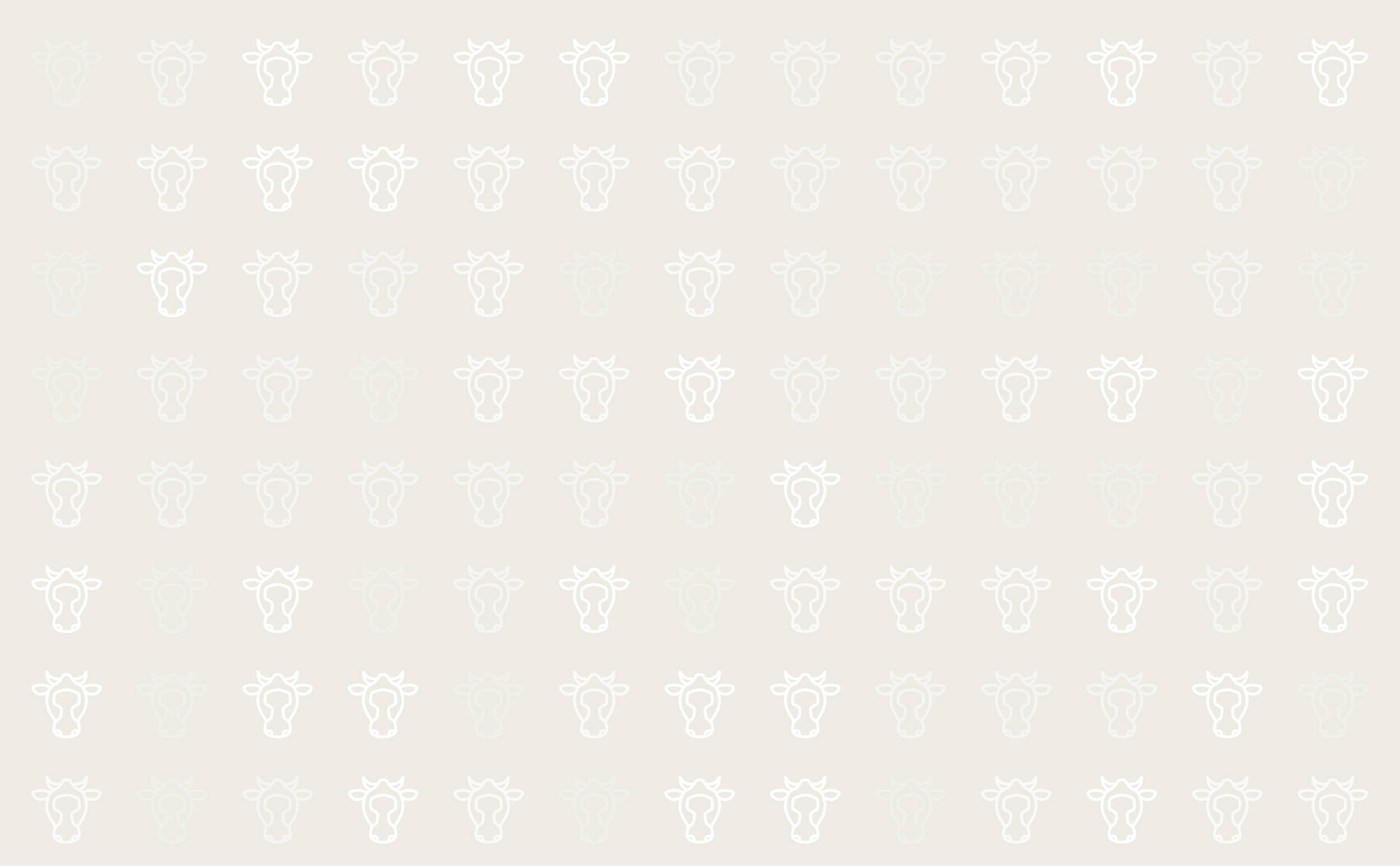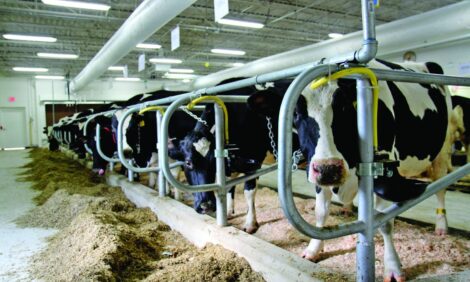



Drought, Water, Forages and Cattle
Drought stricken pastures often require specific management practices. This government of Alberta, Agriculture and Rural Development article provides a list of options and management strategies to assist producers in cases of drought conditions.
Range and pasture management when dealing with drought
Introduction

Every district or ranch has poor production years due to drought. The extent of drought risk depends on frequency. Good range and pasture management will minimize the effects of drought when it occurs. If drought is not planned for, the effects of its occurance will be more severe. To successfully manage drought, a producer needs to know how drought will affect plants, livestock, and management practices.
Perennial pasture
The management of a perennial pasture, both native range and tame pasture, is different than that of annuals. Perennial pasture offers some protection against the variation in production of annual plants.
Past recovery times after grazing affect the productivity of perennial pasture during a drought. Recovery times are dictated by the overall regrowth rates of the plants after grazing. As growth rates slow down, recovery times need to increase and can be as short as 45 days and as long as grazing the plants only once during the season. A planned grazing season addresses the varying recovery times that are affected by many factors affecting the growth rates of the plants.
Allowing plants to recover after grazing results in deep rooted forage plants. Grazing to frequently results in plants with shallow roots. Forage production dramatically decreases during a drought and the shallow rooted plants are affected sooner and more than the more deeply rooted ones. A healthy deep-rooted plant is less dependent on frequent precipitation than a shallow-rooted plant.
Carry over or litter left at the end of the grazing season allows the land to retain moisture. Research has shown that litter reduces the soil surface temperature and therefore reduces evaporation. Although litter is low in nutrients and has low palatability, it can be used by livestock when forage is limited. The green forage growing through the litter will raise the nutrient level of the litter and make it more acceptable to cattle. A deliberate decision has to be made about maintaining the litter level in a pasture during a drought year. Are the cows worth enough to justify reducing pasture litter, or are the litter levels more important as drought proofing in the future? Harvesting litter to alleviate a short term feed shortage may be acceptable as opposed to the removal of litter over the long term. If litter is not maintained, the land becomes more dependant on frequent precipitation during the growing season, as is the case in annual crops. For this reason, forage yields become less predictable on a yearly basis and the capacity of the range or pasture more uncertain.
In summary, a proper stocking rate, appropriate recovery times, deep-rooted plants and sufficient litter on the soil surface will reduce the production risk from drought.
Annual pasture and emergencies
Rather than decreasing the amount of litter in a perennial range or pasture, the use of annuals could be planned. In many areas, oats is the annual cereal of choice either to be grazed, cut for silage, green-feed or grain. Fall rye, winter wheat, or triticale may be substituted or used with oats in as annual pasture.
Oats seeded at two to three bushels per acre will provide enough pasture to feed a cow within six weeks after seeding. Annuals may provide grazing for approximately 100 to 120 days during the growing season and over the winter as swaths. Annual forage production is dependant on precipitation and soil moisture each year.
Complementary use of perennial and annual pastures can alleviate short term drought conditions. For example, spring-seeded annuals can be grazed during July while perennial pastures are rested.
If cereals are not normally grown, cattle can graze hay fields or winter pastures.
Cattle
Unless stocking pressures are reduced in accordance with forage production, weaning weights will be seriously reduced. Research has shown that near normal weaning weights can be achieved when stocking pressure is adjusted to the limited forage supply. If the cow's body condition score falls below 2.0, the cow's ability to breed on time may be impaired. When cows do not get adequate nutrition, either before or after calving, they miss one or more heat cycles or remain open. This affects the length of next year's calving season.
In planning for drought, it is wise to develop and follow certain steps which will minimize the effect on both pasture and livestock. The first priority is to have a flexible breeding herd. This means maintaining only two-thirds to three-quarters of the herd as a cow-calf operation and carrying the remainder as yearlings.
Yearlings are liquidable when adjusting stocking rates for drought. Depending on the conditions, yearlings may be grazed, sold or put into a feedlot. If the drought continues, the next step is to cull the cow herd for age and poor performance.
These steps will minimize the effect on both the pasture and the livestock:
- Have a flexible grazing herd.
- Cull older cows, cows with physical defects, open cows, cows that have difficult births.
- Wean early
- Pregnancy test
- Monitor bull condition throughout breeding season
- Monitor bull and cow rations.
Management
Ranchers should adopt the philosophy that pasture production is their business. The health of their pastures is a very important aspect of ranching. Previous history can direct how severely management must react to the threat of drought. The worst scenario occurs when there is a history of poor grazing management and a large inventory of cattle.
Adequate water supplies should be established in all pastures. Water development is a very important investment.
For areas where drought is frequent, the following items reduce risk. This list begins with ongoing risk reducing tools and ends with extreme measures should a severe drought occur.
Drought risk reduction list
- Maintain a years supply of winter feed for all livestock
- Build reliable and adequate drought proof water sources
- Maintain a flexible herd composition
- Maintain a litter supply in all pastures
- Rest pastures or delay grazing in all pastures appropriately
- Maintain emergency pastures
- Assess your options at the first sign of drought
- Reduce stocking rate early
- Wean calves early
- Evaluate your livestock inventory
- Cull cows
- Preserve the healthy, early to middle age productive cows
- Graze all cereals
- Graze hay land
- Feed your 1 year supply of hay
- Place livestock in a feedlot or sell them
Poisonous plants
Poisonous plants grow in all regions. Poisonous plants vary in their level of toxicity where some species are very toxic, while other species can cause problems, but very seldom do. Thankfully, livestock rarely consume poisonous plants except on overgrazed range or in unusual circumstances.
Overgrazed range is one situation where the risk of poisonous plant consumption is increased. Overgrazing diminishes the availability of desirable species and causes livestock to be less selective in their grazing activity.
Grazing too early in spring can increase the risk of consumption of poisonous plants where ample amounts of desirable forage may not be present which forces livestock to be less selective. Some poisonous species begin growth relatively early in spring. If the pasture is grazed at such a time, this lush, young growth can be more attractive to stock than when the grasses are growing and readily available.
Stress conditions such as drought or frost can increase toxicity levels in some poisonous plants and also reduces the choice of forage available to livestock, which changes their grazing habits.
In moister districts, tall larkspur and water hemlock are the poisonous plants most likely to cause problems. Water hemlock is found in moist areas such as along water-bodies and low spots. Tall larkspur is often found in low spots, moist areas, and forests.
Water hemlock is one of the most poisonous species. One plant contains enough poison to kill a cow. The majority of the poison is located in the root and lower parts of the plant. In spring these plants are easily uprooted by grazing animals, since they grow in moist areas. Water hemlock is one of the first plants to begin spring growth. Symptoms of poisoning from water hemlock are frothing at the mouth, violent convulsions, and severe pain. Death is usually quite rapid.
Water hemlock can be easily confused with water parsnip. Water parsnip is not poisonous and is quite abundant. Probably the quickest way to tell the difference between these two species is by looking at the arrangement of the leaflets on the stem. On water hemlock, the main branch is typically divided into smaller branches from which the leaflets grow. On water parsnip, the leaflets are attached directly to the main branch. The leaflets on water parsnip also tend to be long and narrow. Water hemlock leaflets are more oblong and pointed and more toothed.
With tall larkspur, young plants are most poisonous. Tall larkspur also begins growth early in spring and is quite palatable at this stage. As little as 3.5 kg of young plants are enough to kill a cow. Sheep are much less susceptible to this plant. In fact, sheep are used to control larkspur. Symptoms of larkspur poisoning in cattle are nausea, muscular twitching, drooling at the mouth, and convulsions. Animals fall down repeatedly. Usually death or recovery is quick.
Plant poisonings usually happen so quick that diagnosis and treatment are rarely possible. The best precaution in preventing such situations from developing is through managing for healthy, productive pasture. If the pasture is in good shape, desirable forage species are readily available and the livestock are not pressured into grazing undesirable species in amounts which cause problems. Diagrams are sourced from "Northern Range Plants" book by Colin Stone and Donna Lawrence, Range Management Section, Public Lands. Copies of the book are available from AAFRD, Home Study Program.
Range-land management during drought
Are you ready for the next drought?
The following drought checklist is an accumulation of management practices from the experience of many of our grazing lease holders in Southern Alberta and from other jurisdictions in North America, lessons that are worth considering as a drought risk strategy.
Drought is a distressing time for farmers and ranchers. When drought hits pasture managers face the painful dilemma of reducing stocking rates (grazing pressure) or damaging their range-land. This checklist examines some of the measures you might consider to reduce the impacts of drought on your livestock operation and the range resource, and hasten recovery when the drought is over.
Drought effects on rangeland
- During drought, low soil moisture levels limit plant growth and cause reduced forage yields.
- Root growth is also limited, which makes range plants less able to reach scarce soil moisture.
- Carryover is a portion of each years plant growth that is left ungrazed. As carryover breaks down it becomes litter, the dead plant material on the soil surface. Litter, insulates the land by keeping soil temperatures lower and by reducing water loss. When moisture is scarce, range lands with adequate litter reserves produce more forage than those with less litter.
- During drought, grazing at normal stocking levels will hasten litter breakdown, intensify drought effects and prolong range recovery.
- If grass growth has started, early grazing during drought will further stress range plants and leave them with lower energy reserves.
- Over a series of dry years, heavily grazed ranges will show a shift in plant species to weedy, shallow rooted, less productive species.
During drought conditions, the goals for the manager are to minimize damage to the range and stay in business. Heavy to moderate use of rangeland during drought reduces the production and profit potential for future years.
Drought effects on livestock
Reduced forage yields during drought will mean a declining plain of nutrition for cows and calves. This will have significant effects on live stock production:
- reduced gains due to increased energy expenditure while foraging,
- poor body condition in cows by fall resulting in higher wintering costs,
- more open cows and late conception, which means fewer and smaller calves next year,
- a lighter calf crop during the year of drought, and disease problems like dust pneumonia.
Range management during drought
The following are a variety of different options that southern Alberta farmers and ranchers practice during the droughts in the past decade. Some of these may be appropriate recommendations to your circumstances:
Native rangeland:
- recognize the effect of drought on forage production,
- reduce stocking levels to balance livestock needs with the forage supply,
- allow light to moderate use of forage to enable plants to maintain their present level of vigor(plant health) and retain litter,
- rest or defer (delay) grazing in those fields that were heavily grazed,
- graze first those fields rested or deferred,
- take advantage of grazing opportunities in rest, reserve or buffer fields,
Cropland and tame pasture:
- Consider seeding annuals as an emergency forage source. Spring-seeded fall rye and winter wheat remain vegetative throughout the summer and will respond with growth to any showers that occur.
- Use your cattle to harvest light or failed hay and annual crops.
- Use last year's litter where present. Supplementation is usually required to compensate for the poor nutritional status of litter.
- Make maximum safe use of current growth of seeded pastures which are better adapted to spring grazing than is native range.
- Make full use of stubble pastures after harvest.

Water, salt, supplements and feed:
- Extend your feeding period.
- Place salt, emergency water supplies or supplements in areas that previously were lightly grazed.
- Use fields that will run out of water early, first. This will reduce grazing pressure on fields with better water supplies.
- Haul or pipe water as necessary to ensure timely grazing.
- Ensure that cattle have adequate salt. Some poisonous range plants are salt accumulators and are more palatable to livestock craving salt.

Management after this drought and before the next:
Once the drought has ended, range managers must give the rangeland a chance to recover, so grass production can return to normal and build to the highest level of condition possible. Proper management after the drought has ended will provide a long-term stable forage supply.
- Review your range management plan and the effect drought has had on range condition and vigor. Range-land in good to
- excellent condition provides the best protection against drought. This ensures the best possible mix of drought-adapted, deep-rooted and productive plant species that are naturally present on range-land.
- Plan and implement a grazing system that will build plant vigor and reestablish litter reserves. Moderate to light rates of stocking and deferral of spring grazing will be important.
Some questions you may consider:
- Can the adverse effects of spring use be minimized by altering the period of spring use among fields(deferred rotation)?
- Can cropland be seeded to tame pasture to provide complementary grazing for relief of spring grazing on native grassland?
- Can a grazing system be implemented to restore badly depleted grasslands which may involve a full year of rest for certain fields to increase litter accumulation, improve plant vigor and hasten range recovery?
- Must the deteriorated range be reseeded or will it recover with the right grazing management?
July 2009


